5 Nights / 6 Days
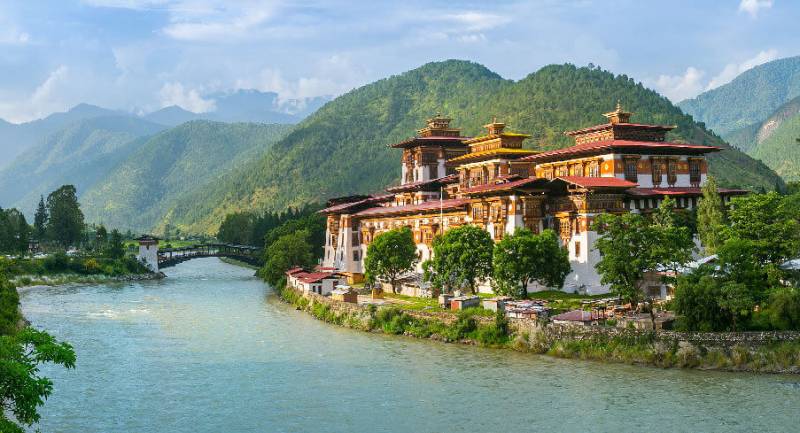
Fly onboard Druk Air to Paro, Bhutan. On a clear day the panoramic views of the Himalaya are sensational, including Everest, but particularly exciting is the approach through the Bhutanese foothills and the landing, including a few steep turns to land at the tiny airstrip of Paro. In Paro you will be received by your Bhutanese guide and transferred to Thimphu that takes an hour.
There are a good many things to see in the capital which has a very relaxed, laid-back feel about it. Thimphu is relatively small having a population of approximately 90,000 people and the streets are wide and tree lined.
Thimphu
(at 2300m) is Bhutan's capital city and center of government, religion and commerce. About two hours drive east from Paro is this a unique city with unusual mixture of modern development alongside ancient traditions. Home to civil servants, expatriates and monk body, Thimphu maintains a strong national character in its architectural style. It was a wooded farming valley until 1961, when it became Bhutan's official national capital. The massive Tashicho Dzong, about 700 years old, was carefully revamped in the 1960s by the late King Jigme Dorji Wangchuk to house the royal and main government offices. Even today, it still only has a few streets and no traffic lights with estimated population of 70,000 people. Thimphu has many places and sights to visit, in addition to several day excursion possibilities. It has relatively more choice in terms of the accommodations.
Tashichho Dzong
This fortress serves as the office of the King, ministers and various government organizations. It also is the headquarters for central monastic body of Bhutan. Bhutan's spiritual leader Je- Khenpo and the monks of both Thimphu and Punakha reside here during summer. It is also the venue for Thimphu Festival in the fall season.
Memorial Chorten
This white and tall landmark of Thimphu was built in 1974 in the memory of third King, Jigme Dorji Wangchuk, who is popularly regarded as Father of Modern Bhutan. It is a four-storey tall white building, containing statues and iconography of deities from complex tantric teachings and serves as an important place of worship for Thimphu residents, as well as from other parts of the country.
Zilukha Nunnery
is housed in Drubthob Goemba (monastery). There are about 70 nuns who live and pray every day in the monastery. There are good views of Tashicho Dzong, Golf course and upper Thimphu.
Takin Sanctuary
Takin (Budorcas taxicolor) has been chosen as the national animal of Bhutan is based both on its uniqueness and its association with country's history and mythology. It is said that Devine Madman, a popular saint is said to have created it with his magical power at a large congregation of devotees. It resembles a cow from back, a goat in from the front, and it continues to befuddle taxonomists, who cannot quite relate to other animal.
Paper Factory
Traditional papers were made from the daphne plant, using simple methods. Like rice papers, these papers are said to last longer.
Sangaygang View Point (Telecom Tower)
There's a wonderful view of Thimphu valley from the hillside below the telecommunications tower (elevation 2685m), high above the town at the end of a road that branches off from the approach to the youth centre. The complex also houses the broadcasting studios of Bhutan television. Don't photograph the telecommunications installation, but the valley is worth a few snaps. The area is known as Sangaygang and it becomes a lover's lane late at night.
Overnight at Hotel, Thimphu
After breakfast, we will drive towards northern end of the valley for about 20 minutes to get started for an exciting walk to CHERI GOMPA (monastery).
This is a pleasant rural walk, gently up a valley through paddy fields and woodland via a Tibetan village. The walk commences at the junction just before the village of Dechencholing . Walk through the village along the track to Pangri Zampa gompa, by the river. The route passes Tibetan village, through paddy fields, past chortens and the village of Choku to Begana (also known as Dodena). From Dodena, after crossing the cantilevered bridge, it is another 30-45 minutes steep climb up hill. Cheri Dorji Dhen was first built in 1620 by Shabdrung, the first ruler of Bhutan, who also established the first order of monks here. It is usually possible to enter Cheri courtyard, but may not be allowed to visit the shrines inside. Descend to the bottom of the hill, where your transport arrives to take you back to Thimphu.
In the late afternoon/evening drive to the site of Colorful Weekend Market where people from all walks of life come to sell and buy their stuffs. It’s place to get an experience with Bhutanese lifestyle, tradition and culture. (Note: Saturdays and Sundays are the days of weekend Market but most people rush on Friday to buy fresh vegetable/fruits and other goods which arrives earlier in the day from near by districts and places.
Overnight at hotel.
In the morning you drive to Punakha, an old winter capital of Bhutan. En-route stop at Dochu LaPass, 10,000ft/3,048m to view the eastern Himalayas, including Bhutan's highest mountain, Gangkar Punsum, 24,770ft/7,550m. The road then drops down through varied –ever changing forest, finally emerging into the highly cultivated Punakha valley. Afternoon visit one of the most impressive Punakha Dzong and later hike to the Chimi lhakhang – the temple of Divine Madman.
Punakha: (sometimes Wangdue) are two separate districts, but they are located in one valley (20km - ½ hr drive apart). The accommodations may be in either one of these two towns but sightseeing generally include visit to both places. Punakha and Wangdue are located at a lower elevation (approx. 1,250m above sea level) and they have pleasant winters. Cactuses, Oranges, bananas and sub-tropical plants are found here. Farmers are able to grow more than one crop in a year. Punakha was once the winter capital of Bhutan, the tradition that is still held by the Central Monks and Jekhenpo, who reside here in Punakha Dzong during the winters and return to Thimphu, which is their summer capital. In Wangdue, there is a small town on the ridge and large Wangdue Phodrang Dzong.
Punakha Dzong: or Pungthang Dechen Phodrang "Palace of Great Happiness" is located on the confluence of two rivers (Phochu and Mochu). It was built in 1637 by Shubdrung Nawang Namgyal and following the ancient traditions, it serves as winter residence for chief abbot (Je- khenpo) and the monks of Central Monastic Body, who returns to Thimphu in the summer. The building was damaged and rebuilt several times, due to flooding, fire and earth quake. It is one exemplary masterpiece of Bhutanese architecture.
Chimi Lhakhang was built by lama Drukpa Kunley in 1499. He subdued the demoness of the Dochu la with his ‘magic thunderbolt of wisdom.’ A wooden effigy of the Lama’s thunderbolt is preserved in the Lhakhang, and childless women go to the temple to receive a wang (blessing) from the saint.
It’s a 20-minute walk across the rice fields from the road at Sopsokha to the temple. The trail leads across rice fields to the tiny settlement of Pana. There are very few monks at the temple, which is surrounded by a row of prayer wheels and some very beautiful slate carvings.
Overnight at hotel, Punakha.
After breakfast drive west via dochula pass 3080 m, weather permitting enjoy the Bhutan Himalaya peaks above 7000 mts. Continue driving to Paro for another 1 hour.
Kichu Lhakhang: Kyichu is one of the oldest temples in Bhutan built in the 7th century by Tibetan King Songtsen Gampo. The story goes that a giant demoness lay across Tibet and the Himalayas, which was preventing the spread of Buddhism. To overcome her, King Songtsen Gampo decided to build 108 temples in a single day to pin the ogress to the earth forever in 659AD. Of these 108 temples, 12 were built in accordance with precise plans at key points. The temple of Jokhang in Lhasa was built over the very heart of the demoness and Kichu is said to have been built on the left foot.
Dungtshe Lhakhang: Dungtse Lhakhang was constructed by the great bridge-builder Thangtong Gyelpo in 1433. It is said to have been built on the head of demoness, who was causing illness to the inhabitants. The building was restored in 1841 and is a unique repository of Kagyu lineage arts. You may or may not be permitted inside but can walk around this three-storey Chorten-type building.
Paro Rinpung Dzong: Rinphung Dzong was consecrated in 1645 by Shabdrung Nawang Namgyal on the site of smaller fort. Throughout the 17th and 18th centuries it served as a bastion against invasion from the north. It is regarded as one of the finest Bhutanese architecture - with intricate wood work, large beams slotted into each other and held together without nails. In it houses the giant 30m X 45m Thangka (Thongdrol), commissioned in mid 18th century, displayed on the last day of Paro Tsechu festival. Rinphung Dzong is the district headquarter of Paro and residence of state monks under Paro rabdey.
Overnight at hotel, Paro.
In the morning hike to the Tiger’s nest You can also take a pony ride to halfway to the most highlighted Buddhist temple in entire Himalayas.
Taktshang - Tiger's Nest: Tiger's Lair or Tiger's Nest as it often referred to for Taktshang Pelphung monastery, is one of the most venerated and famous of Bhutan's monasteries. It is located on the face of a sheer 900m cliff above the floor of Paro valley. It is an impressive and un-miss-able sight but accessible only by walk or to ride mules/pony. If you need the riding horse, you must ask your local guide to arrange it on the previous day. From the trail head (2600m), the walk till the Cafeteria is a steep one hour uphill (about 350m ascent). From the Cafeteria (2940m) and areas around it, one can get a good close-up view of Taktshang. Savor views of the monastery over a well-deserved cup of tea and biscuits at the cafeteria.
For those who wish to proceed further from here, one must be able to walk. Usually Ponies/horses will not take people beyond this point and neither will they take you downhill.
From the cafeteria, trail continues uphill for another 45 minutes to a high observation point (3140m) where there is a Chorten (stupa). From this vantage point, the lookout to the monastery is a very spectacular and seems almost close enough to touch. It is now on the other side of a deep chasm, only around 150m away as bird flies, but takes half hour or even more to reach.
Continue down the flight of cliff-hanging steps on the narrow trail to a beautiful waterfall that plunges down the deep chasm and alongside is a retreat hermitage, jammed dramatically into a rock crevice. Then climb up the flight of steep steps to the monastery. At any point on this walk, you can always return if you find it too difficult. Once inside the monastery, there are several shrines or temples to see with few monks in residence. After visiting Taktshang monastery’s many shrines, most tours schedule lunch at the Cafeteria upon return. After lunch, retrace back to the road-head where you started in the morning. The retrace back is all downhill and always on foot as it is not suitable for riding pony/horse. Please note that proper walking boots is recommended for this hike. Further, if you have more time and ready for more challenging day, there are several monasteries, temples, retreat houses in the surrounding area of Taktshang. The most notable among them are Zangdopelri and Ugyen Tsemo as described seperately.
According to the legend, Guru Padmasambhava or Guru Rinpoche, who spread the Buddhism across the entire Himalayas is said to have flown here in the 8th century on the back of a Tigress, in order to subdue negative spiritual forces that were hostile to spread of Buddhism. In 853, one of his students, Pelgyi Senge mediated here in the main cave. A Stupa inside one of the temples contains his mortal remains and therefore the cave is known as 'Pelphung 'or 'Pelgi's cave'. Subsequently many great spiritual masters such as Milarepa, Thangthong Gyalpo, Phajo Dugom Zhigpo, Shadrung and many others passed periods here in profound meditation. In 1692, Tenzin Rabgye built a two storey temple around what little may have existed previously. This was expanded and refurbished many times over the period of time.
Taktshang and several temples in the area were burnt down in 1951 by fire accident but much of them remained intact and most of the relics were saved. Soon after, it was rebuilt by entire population of Tsento village. Again in April of 1998, a major fire destroyed the main structure of the building and it's contents. Reconstruction began in 2000 and was completed and consecrated after extensive efforts and financial support of Governments as well as donors.
Beyond Takstang Description: Takstang (Tiger's Lair) - or Taktsang Pelphung is one of the most venerated and famous of Bhutan's monasteries. It is located on the face of a sheer 1000m cliff above Paro valley. It is an impressive sight but accessible only by trek or on pony.
The walk to the Tea house is a steep one hour uphill (about 350m ascent). From the tea house or Cafeteria (2940m), one can get a close-up view of Takstang and most actually return back from here. After tea, snacks and rest, we will trek further uphill to a high observation point (3140m), where there is a Chorten (stupa). Continue down the flight of cliff-hanging steps on the narrow trail to a beautiful waterfall that plunges down the chasm and alongside is a retreat hermitage.
Legend has it that Guru Padmasambhava, the great Buddhist master of Oddiyana (present day in Pakistan), who spread the Buddhism across the entire Himalayas is said to have flown here in 8th century on the back of a Tigress, to subdue negative spiritual forces that were hostile to spread of Buddhism. In 853, one of his students Pelgyi Senge mediated here in the main cave.
A Stupa at the main cave contains Pelgyi's mortal remains and therefore the cave is therefore known as Pelphung or Pelgyi's cave. Subsequently many great spiritual masters passed periods here in profound meditation. In 1692, Tenzin Rabgye built a two storey temple here, which over the period of time was expanded and refurbished. In April 1998, tragically, two of the three temples were completely burnt by fire. It has now been restored to its original splendor. After returning from the visit to monastery, we will hike further uphill from the observatory point (described earlier) to Zangdopelri temple (3250m). From here, we can actually look down on the temple, with air distance of not more than 500 meters, providing a unique view. Then if you are can, we can trek for another ½ hour further up to Ugyen Tsemo temple with great view of the valley. Depending on the trail conditions, after Ugyen Tshemo, you can walk back using different route which joins at the end. Return to Paro.
Drukgyel Dzong: Drukgyal Dzong ruins is located 14kms north of Paro town, near the end of the paved road. Drukgyal Dzong (victories fortress) was built around 1644-49 to commemorate the Bhutanese victory over the Tibetan-Mongol forces. It was later burnt in fire accident in 1951. On a clear day, Mt. Jumolhari, Bhutan's holy peak is seen against its backdrop.
Overnight in Hotel, Paro
After early breakfast at the hotel drive to Paro airport for your sensational take-off and scenic Himalayan flight past Chomolhari, Bhutan’s second highest peak.
The travel possibilities in Jaigaon, West Bengal, and our specialised knowledge are what we at Galaxy Adventures Tour are most eager to share with you. You will be helped in understanding the island's breathtaking beauty, extensive history, and the passions and interests of its citizens by our small but knowledgeable staff of tour guides and drivers.
You can relax knowing that your holiday will be great whether you use our services for transportation or excursions because of our in-depth familiarity with the rugged environment, technical genius, and years of experience providing first-rate customer care.
We work hard to go above and beyond for you to keep you returning to encounter our travel adventures. We ask you to come on vacation with us so you can see the improvements for yourself.
Our Mentor:
Galaxy Adventures Tour is conducted by owner Kunal Sarkar in Jaigaon, West Bengal. His direction makes sure that the organization's goals are rigorously controlled and observed. The company has gained notoriety in the travel industry by offering customers the best travel services at reasonable pricing.
Our Values:
The hallmark of SHREEJI TOURS AND TRAVELS is its attentive personnel, which is constantly on hand to help visitors make the most of their stays. Our ability to function depends on the visitor.
Our Policy:
We are the go-to resource for outings that improve communities, protect the environment, and foster growth. We provide you with all the tools you require to ensure that your travels are consistent with your views, including studies and breakthroughs, best travel practices, the appropriate gear, and destinations and organisations with exceptional dedication to attracting visitors.
Read More...

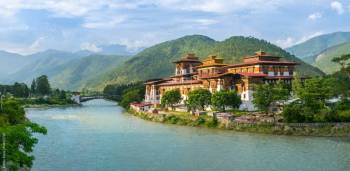 8D/7N
8D/7N
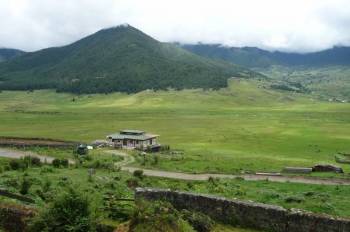 15D/14N
15D/14N
Thimphu - Paro - Punakha - Mongar - Bumthang - Samdrup Jongkhar
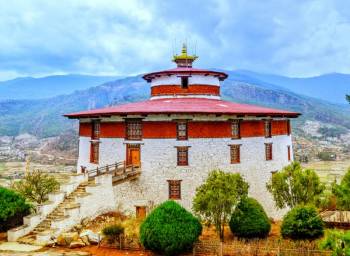 10D/9N
10D/9N
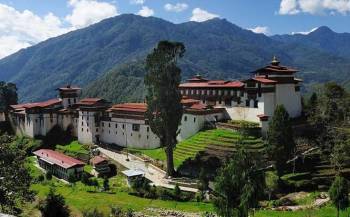 7D/6N
7D/6N
 15D/14N
15D/14N
IXB To IXB 14 Nights - 15 Days
Thimphu - Paro - Punakha - Bumthang - Phuentsholing
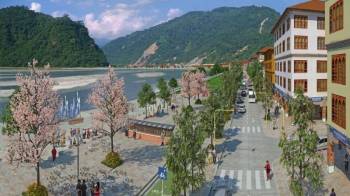 9D/8N
9D/8N
 5D/4N
5D/4N
Hasimara To Hasimara 4 Nights 5 Days
Thimphu - Paro - Punakha - Phuentsholing
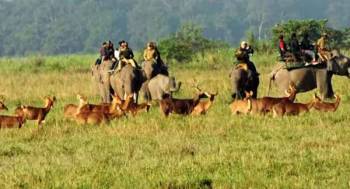 10D/9N
10D/9N
Experience Sangai Of Manipur And Hornbil..
Jorhat - Imphal - Kohima - Kaziranga
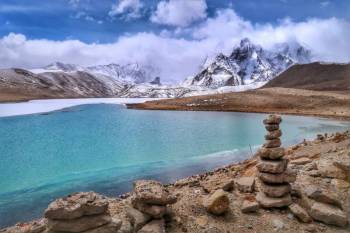 6D/5N
6D/5N
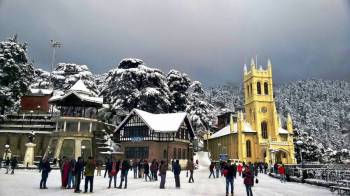 6D/5N
6D/5N
 6D/5N
6D/5N
 6D/5N
6D/5N
 6D/5N
6D/5N
Chardham Yatra By Helicopter Tour
Yamunotri - Gangotri - Kedarnath - Badrinath
 6D/5N
6D/5N
Srinagar,Pahalgam,Gulmarg,Sonamarg,Srina..
Srinagar - Pahalgam - Gulmarg - Sonamarg
 6D/5N
6D/5N
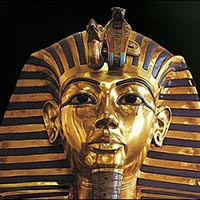 6D/5N
6D/5N
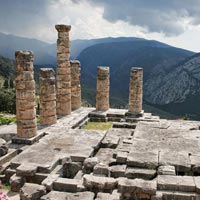 6D/5N
6D/5N
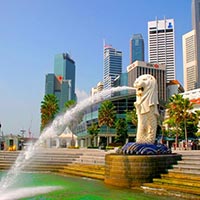 6D/5N
6D/5N
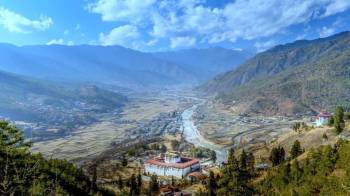 7D/6N
7D/6N
Cultural Bhutan 7 Days - 6 Nights Tour
Thimphu - Paro - Wangdue Phodrang - Punakha
 15D/14N
15D/14N
Himalayan Odyssey 14 Nights - 15 Days Tour
Thimphu - Paro - Wangdue Phodrang - Punakha - Mongar - Bumthang - Trashigang
 10D/9N
10D/9N
 8D/7N
8D/7N
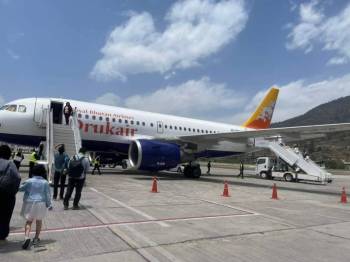 16D/15N
16D/15N
15 Nights/16 days Merak Sakteng Trekking..
Thimphu - Paro - Punakha - Bumthang - Trashigang
 10D/9N
10D/9N
Thimphu - Paro - Wangdue Phodrang - Punakha - Trongsa - Bumthang
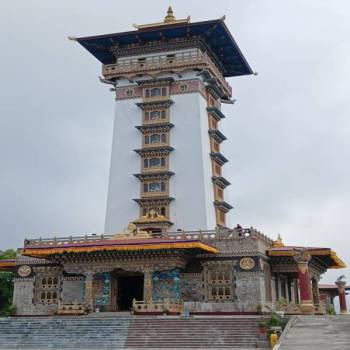 7D/6N
7D/6N
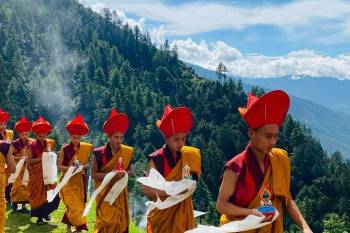 5D/4N
5D/4N
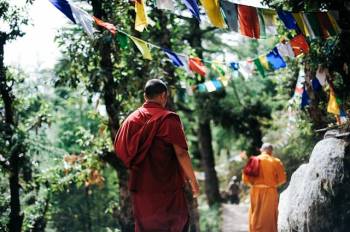 9D/8N
9D/8N
Mystical Himalayas Nepal - Bhutan Discov..
Pokhara - Chitwan - Thimphu - Paro - Patan